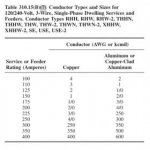Do you have one service disconnect or more then one? More then one leaves you with a lot of options in some cases.
320 amp meter socket only suggests you likely have more then a 200 amp main, but doesn't limit you to any one specific setting, and you can in some cases have multiple mains that the sum of the ratings could exceed 400 amps and it would still be code compliant as long as the load calculations don't exceed the common supply conductor ampacity or the rating of the 320 meter socket.
If you only have a single main then you are permitted to use reduced conductor sizes allowed in 310.15(B)(7), but again the 320 socket only makes us assume you need more then 200 amps but not necessarily have to have 400 amps overcurrent device and conductors either, though it is common to set up 400 amps capacity when you have a 320 meter socket even if you don't really need all 400 amps of capacity.
One example - you could supply three 200 amp main breaker panels from a 320 meter socket - each main would require a 200 amp conductor to supply it. But say your total calculated load is only 375 amps (less then 320 is continuous), you could connect these to the 320 meter socket with only 375 amps worth of conductor on the meter supply side, and that conductor can be reduced to the 83% permitted in 310.15(B)(7).
Confused yet?



